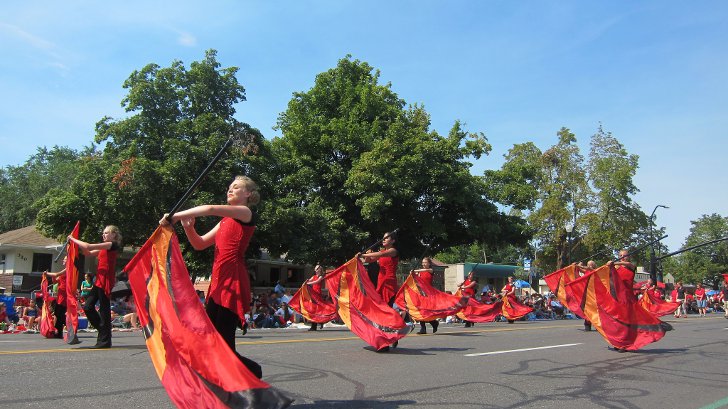The Church of Jesus Christ of Latter-day Saints, known informally as the Mormon Church, was founded by Joseph Smith in 1830 in New York. After being expelled from several locations in the eastern United States (including Far West, Missouri and Nauvoo, Illinois), thousands of Mormon pioneers moved to a vast desert landscape that became known as the Utah Territory.
The annual parade was established to commemorate the anniversary of the day when the pioneers first set foot in the Salt Lake Valley. The first parade occurred on July 24, 1849 and was led by the Nauvoo Brass Band, the official musical organization of the LDS Church. It was known as the Pioneer Day Parade until 1931 and as the Covered Wagon Days Parade from 1931 to 1946. Since 1947 (the 100th anniversary of the pioneers’ arrival) it has been known as the Days of ’47 Parade.
Salt Lake City’s Pioneer Day parade is known for its beautifully decorated floats. Alongside floats, it features marching bands, clowns, costumed characters, horses and other participants. The parade route starts at State Street and South Temple and ends at Liberty Park, where a fair with rides, games and vendors is held following the parade. Many viewers camp out on the streets along the parade route the night before to make sure they have a good view of the procession.
Alongside the parade, The Days of ’47, Inc. organizes many other celebratory events and activities held on and around Pioneer Day. They include the Royalty Pageant, special school projects, concerts, the Youth Parade, the Family Festival, the Float Preview Party, the Pioneer Day Rodeo, the Desert News Run (marathon / half marathon / 10K / 5K), the Sunrise Service, and more. From the holiday’s inception until 1968, the pioneers who arrived in the Salt Lake Valley before 1869 were honored with an annual dinner. The last living pioneer, Hilda Erickson, died in 1968 at age 108.

Photo: digitalnut




